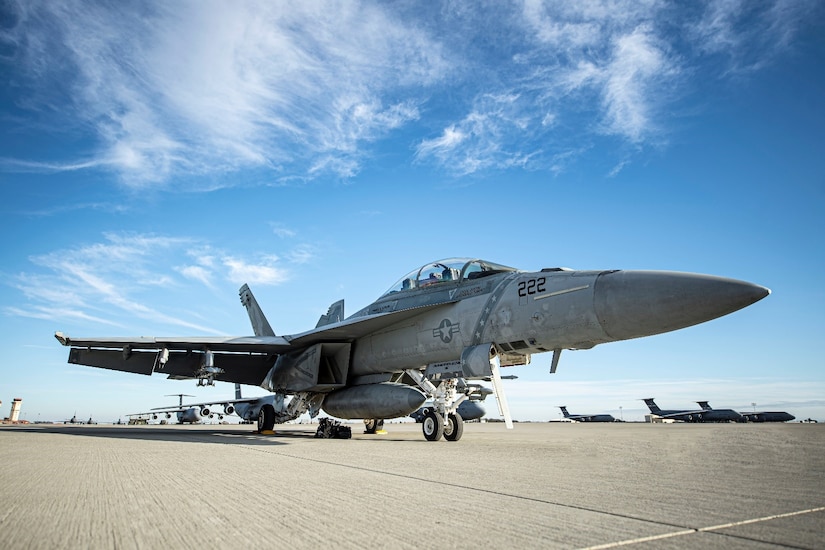Nov. 18, 2020 | , DOD News
It was just two years ago when the Joint Artificial Intelligence Center was created to grab the transformative potential of artificial intelligence technology for the benefit of America's national security, and it has grown substantially from humble beginnings.
Dana Deasy, the Defense Department's chief information officer, and Marine Corps Lt. Gen. Michael Groen, the director of the JAIC, virtually discussed from the Pentagon the growth and goals of JAIC at a FedTalks event during National AI Week.
''One of the things we've wanted to keep in our DNA is this idea that we want to hire a lot of diversity of thought into [JAIC],'' Deasy said, ''but yet do that in a way where that diversity of thought coalesces around a couple of really important themes.''

When JAIC began, it needed to grab hold of some projects that can show people that it can be nimble, agile, and it has the talent to give something that is meaningful back to the Defense Department, he noted.
So JAIC started in a variety of different places, Deasy said. ''But now as we've matured, … we really need to focus on what was the core mission … for JAIC. And that was, we have to figure out what the role is that AI plays in enabling the warfighter. And I've always said that JAIC should be central to any and all future discussions in that place,'' the CIO said.
''Transformation is our vision,'' Groen said.
''So, it's a big job. We discovered pretty quickly that seeding the environment with lots of small AI projects was not transformational in and of itself. We knew we had to do more. And so, what we're calling JAIC 2.0 is a focused transition in a couple of ways. [For example], we're going to continue to build AI products, because the talent in the JAIC is just superb,'' the JAIC director said.
Groen noted that the JAIC is thinking about solution spaces for a broad base of customers, which really gets it focused.

''There are, you know, the application, and the utilization of AI across the department [that] is very uneven. We have places that are really good. And there, some of the services are just doing fantastic things. And we have some places, large-scale enterprises with fantastic use cases [that] really could use AI, but they don't know where to start. So, we're going to shift from a transformational perspective to start looking at that broad base of customers and enable them,'' he said.
JAIC is going to continue to work with the military services on the cutting edge of AI and AI application, especially in the integration space, where JAIC is bringing together intelligence or intelligence of maneuver, Groen said, ''The warfighting functions have superb stovepipes. But now we need to bring those stovepipes together and integrate them through AI,'' he added.
The history books of the future will say JAIC was about joint common foundation, Deasy said. ''JAIC could never do all of the AI initiatives with the Department of Defense, nor was it ever created to do that. But what we did say was that people who are going to roll up [their] sleeves, and seriously start trying to leverage AI to help the warfighter every day. … at the core of JAIC's success has got to be this joint common foundation,'' he noted.
Deasy noted that the JAIC was powerful and very real.
Into next year, he added, JAIC will have some basic services. And then it's a minimum viable product approach, where JAIC is building some basic services, a lot of native services from cloud providers, but then adding services to that.
''And where we hope to grow the technical platform is a place where people can bring their data, places where we can offer data services, data conditioning, maybe table data labeling and we can start curating data,'' Deasy projected. ''One of the things we'd really like to be able to do for the department is start cataloging and storing algorithms and data. So now we'll have an environment so we can share training data, for example, across programs.''
The modernized software foundation now gives JAIC a platform so it can build AI, Groen said, adding AI has to be a conscious application layer that's applied, leveraging the platform and the things that digital modernization provides.
''But when you think of it that way, holy cow, what a platform to operate from,'' he said.

So now JAIC will really have a have a place where the joint force can effectively operate, he said, adding that the JAIC can now start integrating intel in fires, intel in a maneuver command and control, the logistics enterprise, the combat logistics enterprise and sort of the broad support enterprise, Groen noted.
''You can't do any of that without a platform, and you can't do any of that without those digital modernization tenets,'' the JAIC director said.
If JAIC is going to have the whole force operating at the speed of machines, then it has to start bringing these artificial intelligence applications together into an ecosystem, Groen said, noting that it has to be a trusted ecosystem, meaning "we actually have to know, if we're going to bring data into a capability, we have to know that's good data."
''So how do we build an ecosystem so that we can know the provenance of data, and we can ensure that the algorithms are tested to set in a satisfactory way that we can comfortably and safely integrate data and decision making across warfighting functions,'' the JAIC director asked. ''That's the kind of stuff that I think it's really exciting, because that's the real transformation that we're after.''







No comments:
Post a Comment